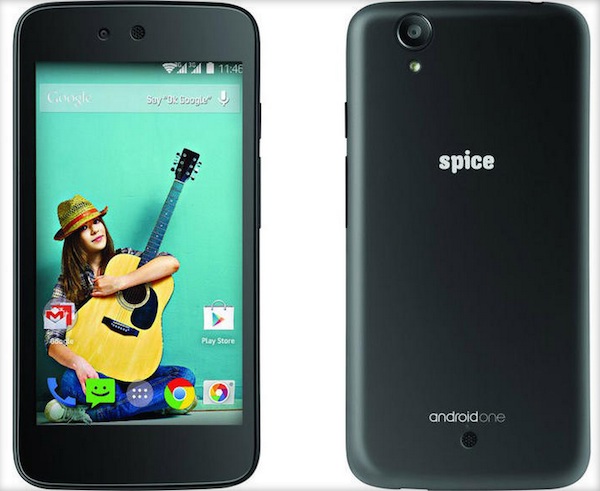Google aims to increase sales, particularly of its Android product, in emerging markets, starting with the launch of its $105 Android One devices in India, a major emerging economy. The low-cost handset unveiled in New Delhi on Monday is Google’s first product under the Android One family.
The search giant, and also the maker of the world’s largest mobile operating system in terms of usage, collaborated with Micromax, Karbonn and Spice Mobiles, all headquartered in India, to build the Micromax Canvas A1, Karbonn Sparkle V and Spice Android One Dream UNO Mi-498, respectively.

All three smartphones sport a 4.5-inch FWVGA display with a 854x480p resolution and a 5-megapixel rear shooter. Under the hood, the handsets feature a quad-core 1.3GHz MediaTek processor, dual-SIM slot, 1GB of RAM and 4GB of onboard storage expandable with a microSD card slot. They are powered by a 1,700mAh battery.
In India, a cheap Android phone such as the One means more people will gain access to the Internet and additional users for Google products being offered as primary apps of the new line of handsets. India is also a lucrative region to sell cheap handsets since the citizens there could now buy these products. But first, the company must work to enhance its hardware and software systems. There’s also the problem with glitches on Android smartphones that vary significantly in the versions of the operating system. The wide variety is the major cause of phone glitches. This needs to be addressed.
Google will try to solve that by releasing the upgrades itself, which means the Mountain View company will have increased influence on the quality of future updates to the operating system.
But as it happens, India is already a place of strong competition among smartphone makers, and Google’s foray into the market with cheap offerings must come with an edge in terms of quality more than affordability.
You might wonder why Google is offering the handsets at such a low price. The answer lies in how the company designed the mobile device. Google integrated minimum hardware components to price it that small, and the Android One system runs stock Android. The phones feature Hindi language since it is spoken by a majority in the country.
Google Play Store has also been embedded into Android One, with two years of direct updates to the smartphone, which means the updates will not come anymore from the device makers themselves.
Google plans to introduce Android One in other emerging markets like the Philippines and Indonesia.
Disclosure: We might earn commission from qualifying purchases. The commission help keep the rest of my content free, so thank you!




Mitchell says
“Google Play Store has also been embedded into Android One, with two years of direct updates to the smartphone, which means the updates will not come anymore from the device makers themselves.”
Seriously? Google wants to support devices for 2 years? I thought Android one was not just supposed to fix the problem of bloatware but also the problem of older Android devices running ancient software due to a lack of vendor updates.
Or am I misunderstanding this?
Mitchell says
bloatware being vendor bloatware